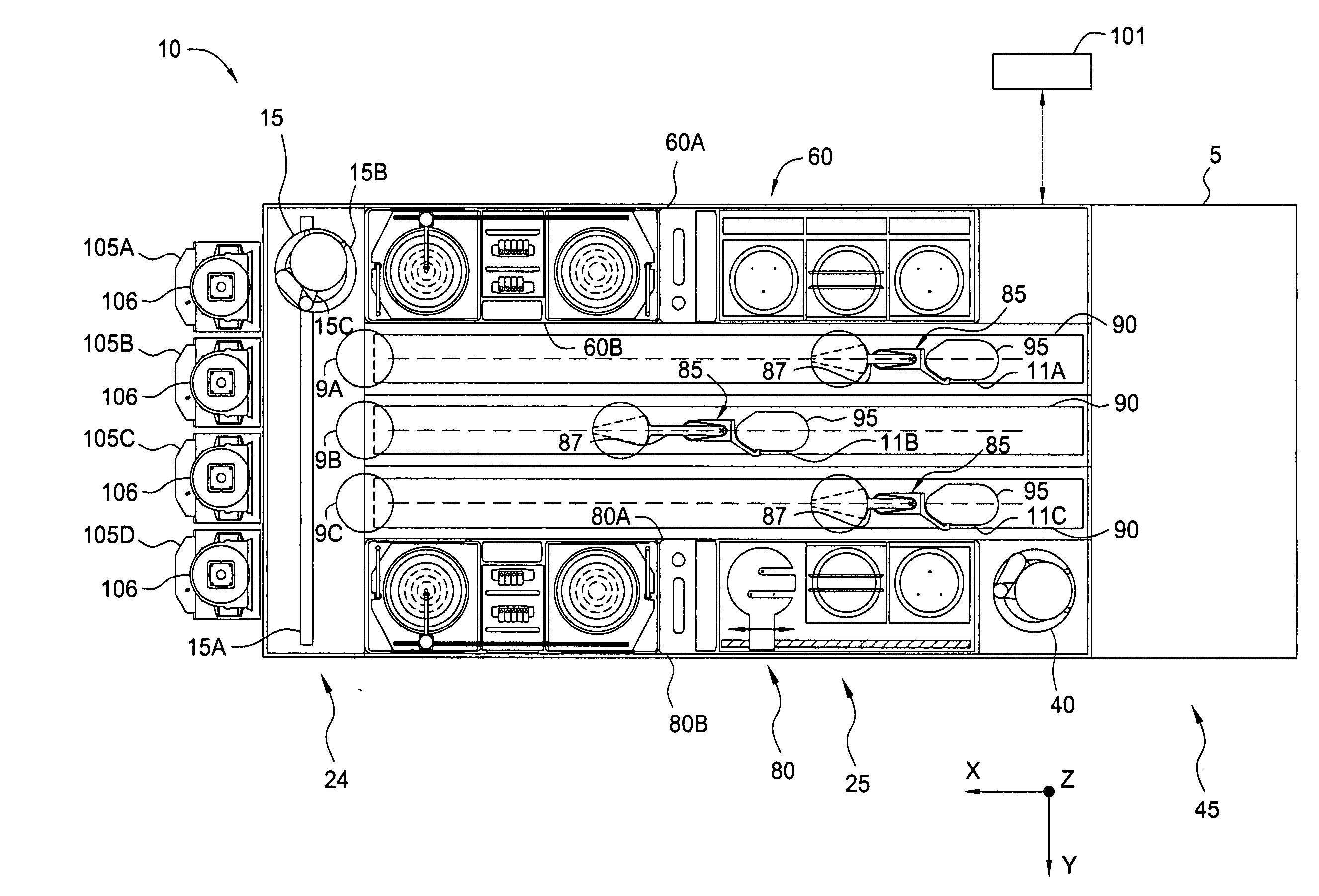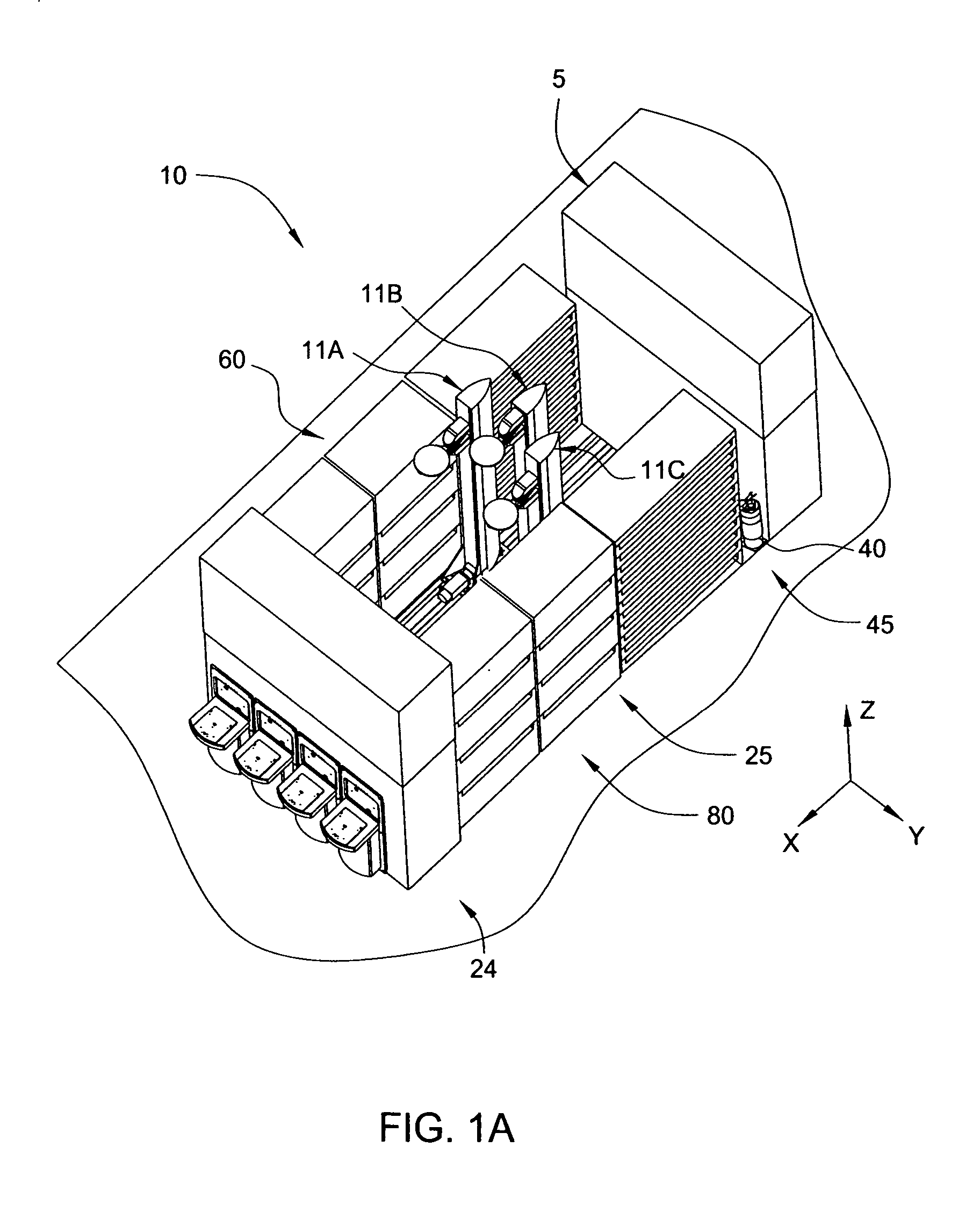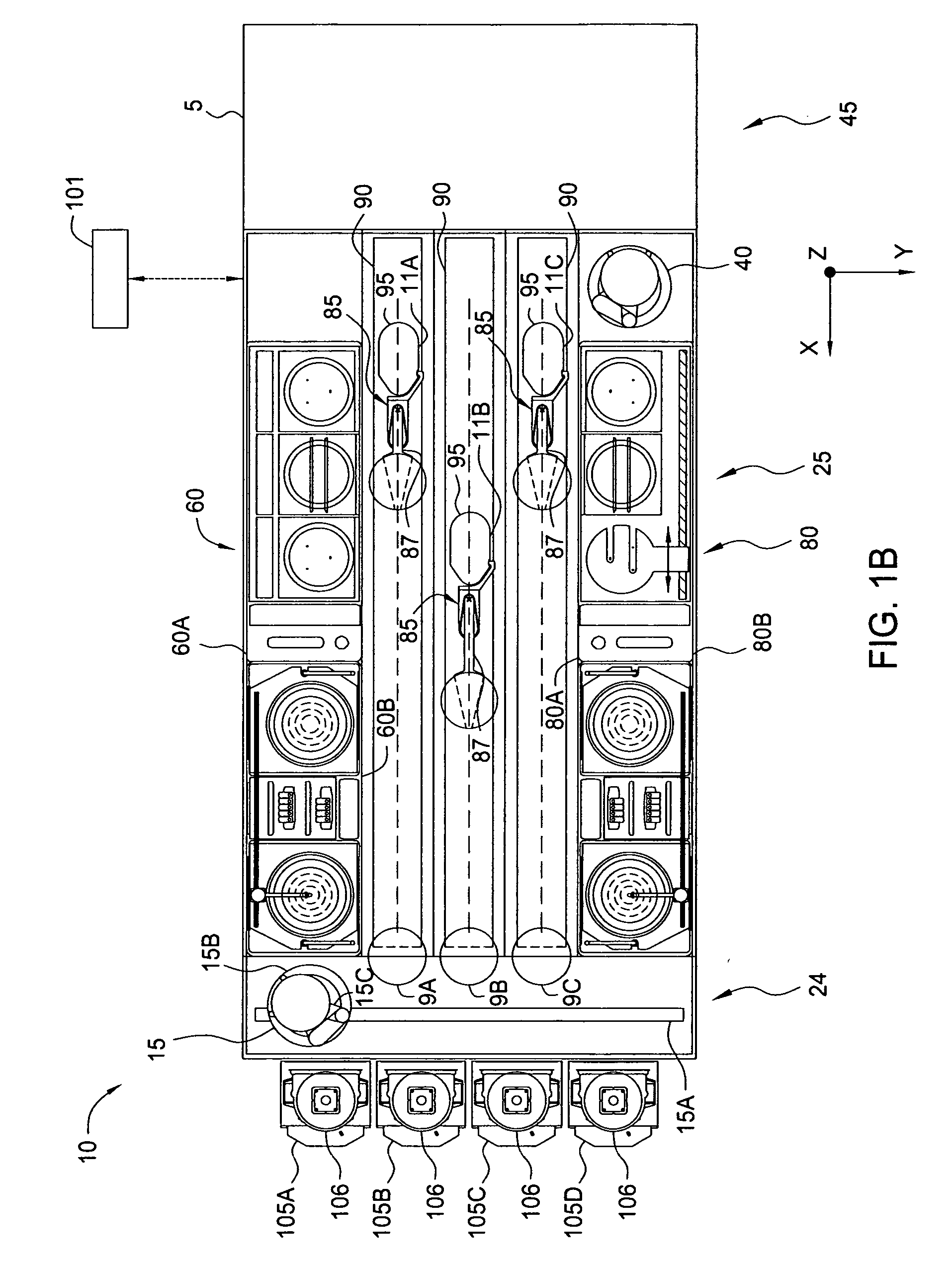Cartesian robot design
a robot design and cartesian technology, applied in the direction of conveyor parts, electric devices, transportation and packaging, etc., can solve the problems of limiting the throughput of the processing sequence, wasting a large amount of time for cluster tool users and manufacturers, and wasting tim
- Summary
- Abstract
- Description
- Claims
- Application Information
AI Technical Summary
Benefits of technology
Problems solved by technology
Method used
Image
Examples
Embodiment Construction
[0068] The present invention generally provides an apparatus and method for processing substrates using a multi-chamber processing system (e.g., a cluster tool) that has an increased system throughput, increased system reliability, improved device yield performance, a more repeatable wafer processing history (or wafer history), and a reduced footprint. In one embodiment, the cluster tool is adapted to perform a track lithography process in which a substrate is coated with a photosensitive material, is then transferred to a stepper / scanner, which exposes the photosensitive material to some form of radiation to form a pattern in the photosensitive material, and then certain portions of the photosensitive material are removed in a developing process completed in the cluster tool. In another embodiment, the cluster tool is adapted to perform a wet / clean process sequence in which various substrate cleaning processes are performed on a substrate in the cluster tool.
[0069]FIGS. 1-6 illust...
PUM
 Login to View More
Login to View More Abstract
Description
Claims
Application Information
 Login to View More
Login to View More - R&D
- Intellectual Property
- Life Sciences
- Materials
- Tech Scout
- Unparalleled Data Quality
- Higher Quality Content
- 60% Fewer Hallucinations
Browse by: Latest US Patents, China's latest patents, Technical Efficacy Thesaurus, Application Domain, Technology Topic, Popular Technical Reports.
© 2025 PatSnap. All rights reserved.Legal|Privacy policy|Modern Slavery Act Transparency Statement|Sitemap|About US| Contact US: help@patsnap.com



